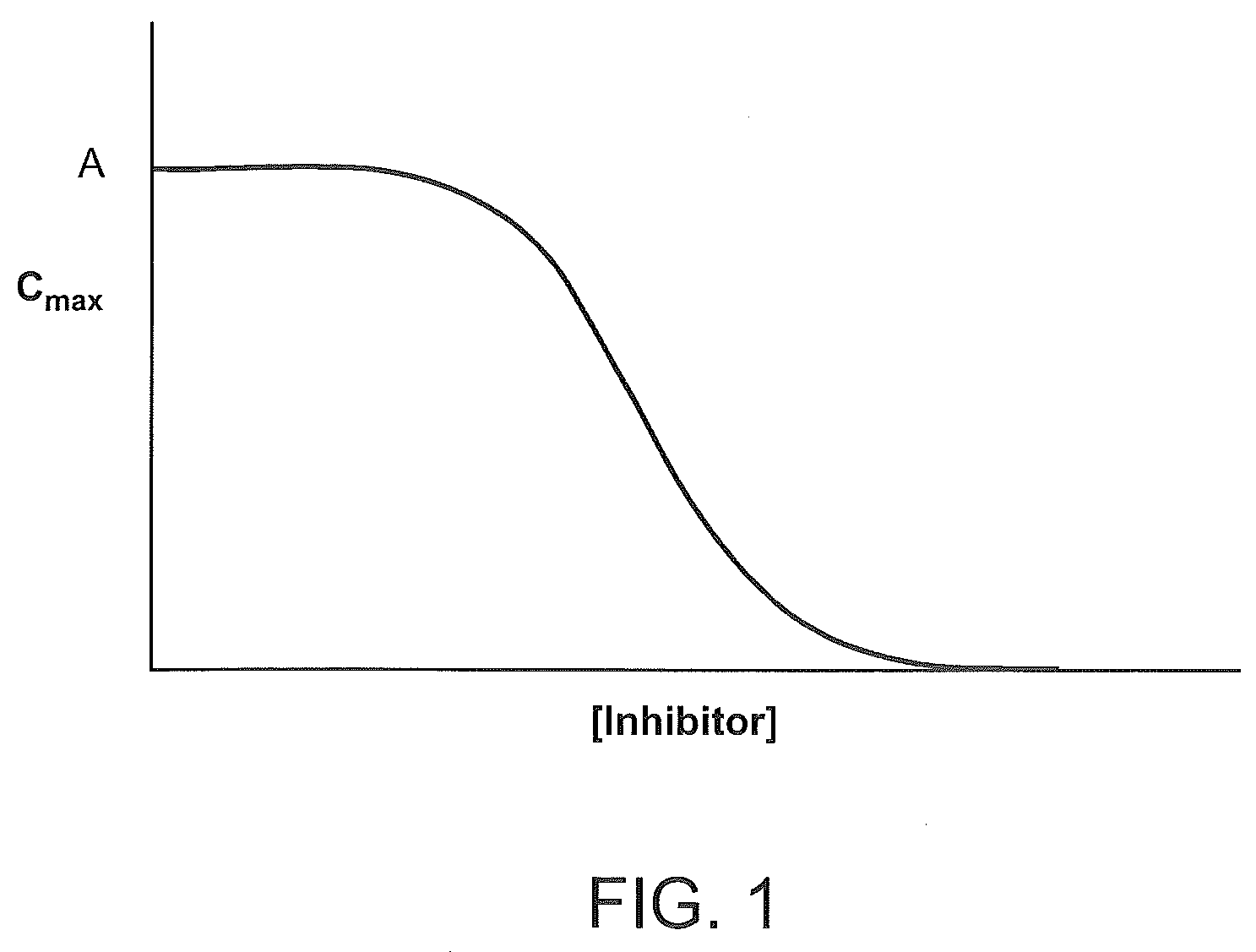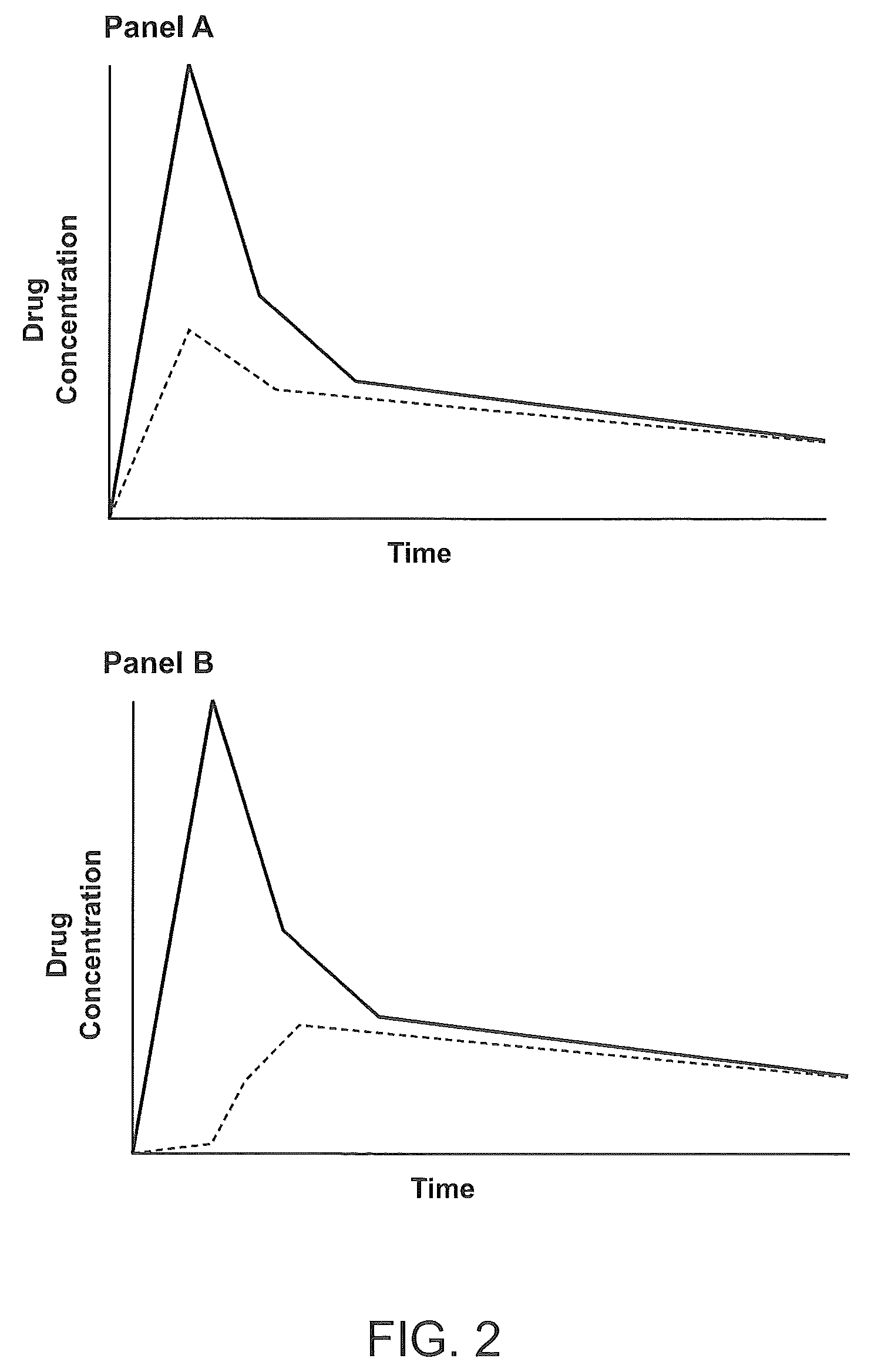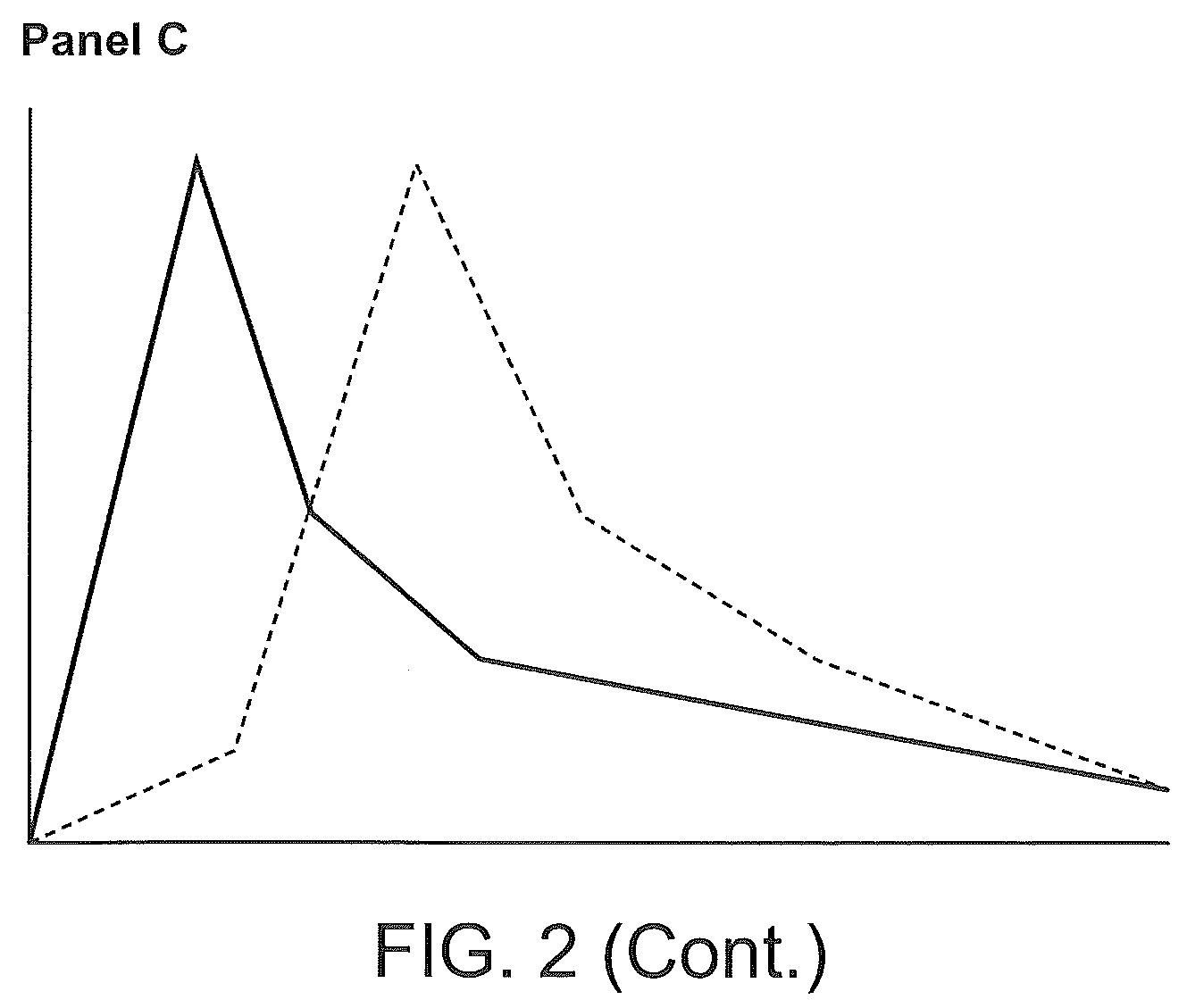Compositions comprising enzyme-cleavable phenol-modified tapentadol prodrug
a technology of phenol-modified tapentadol and enzyme-cleavage, which is applied in the directions of biocide, organic chemistry, peptide/protein ingredients, etc., can solve the problems of patients being denied treatment, phenolic opioids are susceptible to misuse, abuse or overdose, and the access to the drugs is expensive to administer, so as to improve patient compliance, reduce side effects of a therapy, and improve patient compliance
- Summary
- Abstract
- Description
- Claims
- Application Information
AI Technical Summary
Benefits of technology
Problems solved by technology
Method used
Image
Examples
example 1
[0454]FIG. 13 illustrates the synthesis of (S)-ethyl 4-(5-guanidino-2-(naphthalene-2-sulfonamido)pentanoyl)piperazine-1-carboxylate (Compound 101)
preparation 1
Synthesis of 4-[(S)-5-({-Amino-[(E)-2,2,4,6,7-pentamethyl-2,3-dihydro-benzofuran-5-sulfonylimino]-methyl}-amino)-2-(9H-fluoren-9-ylmethoxycarbonylamino)-pentanoyl]-piperazine-1-carboxylic acid tert-butyl ester (A)
[0455]To a solution of Fmoc-Arg(Pbf)-OH 1 (25.0 g, 38.5 mmol) in DMF (200 mL) at room temperature was added DIEA (13.41 mL, 77.1 mmol). After stiffing at room temperature for 10 min, the reaction mixture was cooled to ˜5° C. To the reaction mixture was added HATU (16.11 g, 42.4 mmol) in portions and stirred for 20 min and a solution of tert-butyl-1-piperazine carboxylate (7.18 g, 38.5 mmol) in DMF (50 mL) was added dropwise. The reaction mixture was stirred at ˜5° C. for 5 min. The mixture reaction was then allowed to warm to room temperature and stirred for 2 h. Solvent was removed in vacuo and the residue was dissolved in EtOAc (500 mL), washed with water (2×750 mL), 1% H2SO4 (300 mL) and brine (750 mL). The organic layer was separated, dried over Na2SO4 and solvent remov...
preparation 2
Synthesis of 4-[(S)-2-Amino-5-({amino-[(E)-2,2,4,6,7-pentamethyl-2,3-dihydro-benzofuran-5-sulfonylimino]-methyl}-amino)-pentanoyl]-piperazine-1-carboxylic acid tert-butyl ester (B)
[0456]To a solution of compound A (46.2 mmol) in EtOAc (175 mL) at room temperature was added piperidine (4.57 mL, 46.2 mmol) and the reaction mixture was stirred for 18 h at room temperature. Next the solvent was removed in vacuo and the resulting residue dissolved in minimum amount of EtOAc (˜50 mL) and hexane (˜1 L) was added. The precipitated crude product was filtered off and recrystallised again with EtOAc (˜30 mL) and hexane (˜750 mL). The precipitate was filtered off, washed with hexane and dried in vacuo to afford compound B (28.0 g, 46.2 mmol). LC-MS [M+H] 595.4 (C28H46N6O6S+H, calc: 595.3). Compound B was used without further purification.
PUM
| Property | Measurement | Unit |
|---|---|---|
| weight | aaaaa | aaaaa |
| pH | aaaaa | aaaaa |
| body weight | aaaaa | aaaaa |
Abstract
Description
Claims
Application Information
 Login to View More
Login to View More - R&D
- Intellectual Property
- Life Sciences
- Materials
- Tech Scout
- Unparalleled Data Quality
- Higher Quality Content
- 60% Fewer Hallucinations
Browse by: Latest US Patents, China's latest patents, Technical Efficacy Thesaurus, Application Domain, Technology Topic, Popular Technical Reports.
© 2025 PatSnap. All rights reserved.Legal|Privacy policy|Modern Slavery Act Transparency Statement|Sitemap|About US| Contact US: help@patsnap.com



